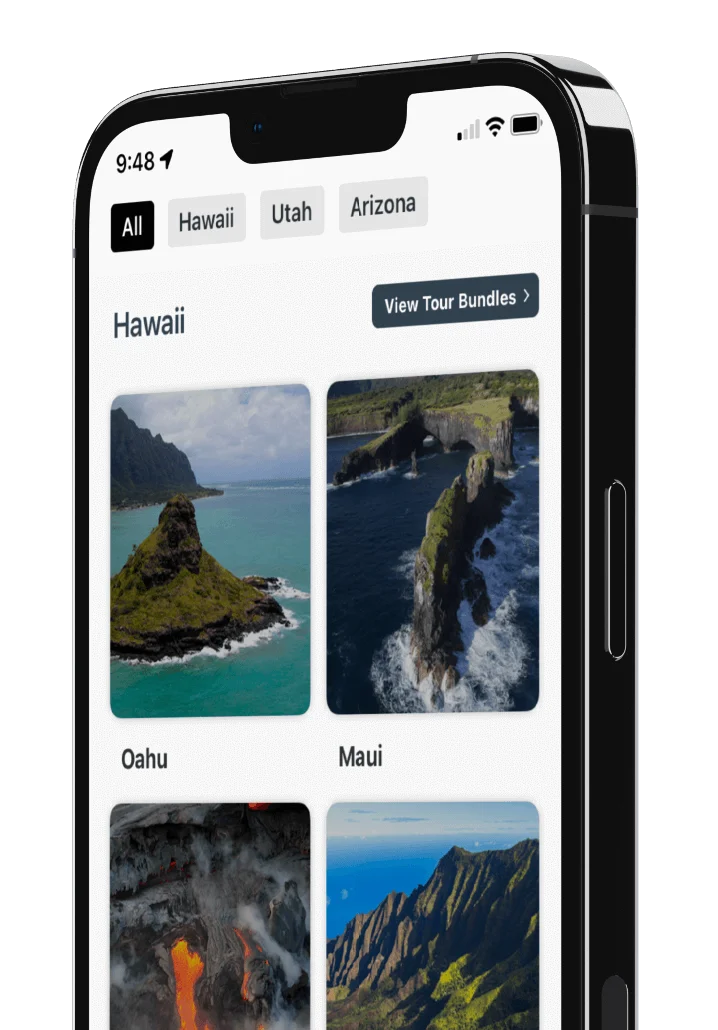
Mount Rainier National Park Waterfalls You Can't Miss

Introduction to Mount Rainier National Park
In the Pacific Northwest just a short drive south of Seattle, Washington, stands a massive volcano rising 14,410 feet above sea level.
Mount Rainier is a true icon (and still considered an active volcano) that towers above the city skyline, and is the most-glaciated peak in the contiguous U.S.
Inside this must-visit national park, you’ll find five rivers created by Rainier’s glaciers and snow melt-off.
Additionally, you'll encounter blankets of alpine meadows featuring glorious flowers in late spring, summer, and autumn. And all of it’s surrounded by ancient forests with towering conifers.
Exploring Mount Rainier National Park
 Shutterstock Image
Shutterstock Image
Mount Rainier National Park dates back to 1899 and protects over 235,000 acres (368 square miles) of wilderness and many ecosystems.
If you want to experience all that the park has to offer, you’ll need plenty of time to drive the more than 147 miles of roads and hike over 270 miles of trails.
The park has five main areas for visitors:
- Paradise
- Sunrise
- Longmire
- Ohanapecosh, and
- Carbon River/Mowich
Each can be used as a ‘base’ for exploring various sites. The park also got three visitor centers, one museum, three main campgrounds, and two inns that provide lodging inside the park.
And then there are the waterfalls. At certain times of the year, you’ll catch some spectacular waterfalls great and small, many of which are ephemeral (only appearing during certain times of the year).
Navigating the Park
So how do you begin figuring out how to navigate this spectacular park (and see all those great waterfalls)? I’d recommend the Shaka Guide Mount Rainier Tour.
It’ll take care of all the details, from driving directions and need-to-know information to stories and music unique to this area that’ll keep you entertained along the way. Additionally, it will teach you about the history and geology of Rainier.
Another reason for downloading this self-driving app before you go is that there is little-to-no wifi inside the park, which means your own GPS won’t work and you could find yourself literally lost in the wilderness.
Timed-Entry Reservation
One more thing to know before you go: Mount Rainier National Park has now implemented a timed-entry reservation system.
So plan ahead by reading the Shaka Guide Article that details all the nuances of this entry system, or click here to know more about the timed-entry reservation system.
Mount Rainier Hidden Gems
Now, let’s talk about those waterfalls. With all the rivers, creeks, and streams throughout Mount Rainier National Park (all stemming from the 25 glaciers on the volcano, combined with the annual snowpack), there are actually an untold number of waterfalls — so many, in fact, that they haven’t all been named.
Especially since some of them are buried deep in the wilderness, far from any roads or trails.
Best Time to Visit Mount Rainier
 Shutterstock Image
Shutterstock Image
The best time to visit Mount Rainier is in early summer when melting snow feeds the streams, showcasing the waterfalls.
Additionally, autumn fills the streams during the rainy season, further enhancing their beauty.
But the most popular time to visit the park is in July and August when it’s actually at its driest. Still, many of the major waterfalls will still be flowing.
Before exploring the waterfalls, keep in mind that the areas and paths surrounding them can become super slippery. Approach carefully and slowly to avoid slipping and falling.
Even the rocks and some of the man-made paths and stairways surrounding some of the more popular falls can become slick.
Also, be hyper-aware of your surroundings when you see a waterfall. There could be steep slopes and sheer cliff drop-offs that are extremely dangerous to get too close to.
Mount Rainier Waterfalls
Here are some of the best waterfalls around Mount Rainier National Park, and the ones easiest to spot when you visit, either by car or via a hiking trail.
1. Christine Falls
 Shutterstock Image
Shutterstock Image
If you enter the park from the Nisqually Entrance in Ashford and drive along the road that passes the Longmire section of the park, you’ll then drive right past Christine Falls on your way to the Paradise section of the park.
Christine Falls is fed by Van Trump Creek. It’s a 60-foot plunging waterfall framed by a historic arched bridge.
This waterfall can be viewed along the road between Longmire and Paradise (the falls are about 4.5 miles from Longmire).
The best way to view the falls is to park and walk down the short path to the viewpoint below the stone bridge.
You can visit this Christine Falls on Shaka Guide's Mount Rainier Tour.
2. Narada Falls
 Image from Flickr by Mount Rainier National Park
Image from Flickr by Mount Rainier National Park
As you continue from Longmire past Christine Falls, continuing toward Paradise, you’ll pass Narada Falls.
Narada Falls is fed by the Paradise River, plunging 168 feet over andesite lava flow to the valley floor. This waterfall is nine miles past Longmire along the road to the Paradise section of the park.
From the road, there’s a short, steep walk to the base of the falls for the best view, and you may even get to feel the icy spray and mist on your skin from that vantage point.
Explore this waterfall as part of your journey with Shaka Guide's Mount Rainier Tour
3. Myrtle Falls

Once you reach the Paradise section of the park, Myrtle Falls is a must-see!
Myrtle Falls is one of the easiest waterfalls to walk to. It is also one of the most photogenic, sitting directly under Mount Rainier, allowing you to capture both in one photo.
Myrtle Falls is fed by Edith Creek. This 60-foot waterfall has a braided cascade of water. To reach it, just walk .4 miles from The Paradise Inn, following the paved Skyline Trailhead northeast.
Then, stand on the footbridge to look down at the falls, or walk down the steep stairway to capture that photo looking up at both the falls and Mount Rainier itself towering over the falls. Just be mindful that this area is downright treacherous in the springtime.
Make sure to include a visit to this waterfall during your Shaka Guide's Mount Rainier Tour.
4. Martha Falls
 Image from Flickr by Jeff Gunn
Image from Flickr by Jeff Gunn
From Paradise, if you’re driving along Stevens Canyon Road over to the east side of the park, you’ll be able to see Martha Falls along the way.
Martha Falls is fed by Unicorn Creek, which stems from Snow Lake, cascading over the edge of a lava flow. It drops 125 feet to the canyon floor over Martha Falls.
Martha Falls can be seen from a specified viewpoint along Stevens Canyon Road.
Once you reach the east side of the park in the Ohanapecosh area, the Silver Falls trail leads to the glorious Silver Falls waterfall, if you’re up for a hike through a temperate rainforest!
5. Ohanapecosh Falls
 Image from Flickr by Mount Rainier National Park
Image from Flickr by Mount Rainier National Park
If you’re heading toward Grove of the Patriarchs, Ohanapecosh Falls may also be on your list of waterfalls to see if you’re up for a rather long hike.
Ohanapecosh Falls stems from the Ohanapecosh River. The falls drop nearly 70 feet in this two-tiered waterfall with double-plunge pools.
To reach this waterfall, follow the East Side trail about 3.7 miles north from the Grove of the Patriarchs parking area. The best place to view it is from the footbridge south of the falls.
Don't miss out on seeing this waterfall while on Shaka Guide's Mount Rainier Tour.
6. Silver Falls
 Image from Flickr by jb10okie
Image from Flickr by jb10okie
Silver Falls stems from the Ohanapecosh River. After the river surges over a series of smaller cascades, the waterfall becomes a 60-foot drop into an amphitheater surrounded by old-growth forest.
When it’s flowing at its strongest, its roar is quite impressive. You can reach the falls via the Silver Falls Trail, which you can pick up from the Ohanapecosh Park entrance, near the campground.
The best views are from just east of the dramatic footbridge that spans the river’s gorge. Or from the viewpoint perched on the west side of the amphitheater next to the falls.
The Silver Falls Trail leading to the waterfall runs along the east side of the river and is relatively level. It’s about 1.5 miles to the falls, then the trail loops back along the river’s west side.
Experience this majestic waterfall firsthand on Shaka Guide's Mount Rainier Tour.
7. Spray Falls
 Image from Flickr by Jeff Hollett
Image from Flickr by Jeff Hollett
There’s also a pretty amazing waterfall in the less-popular, more remote areas of the park — Mowich Lake — and it’s called Spray Falls. But it’s recommended that you have a high-clearance vehicle and all-wheel drive to get over to that section of the park.
Spray Falls stems from Spray Creek, fed by the remains of the Flett Glacier. The veil-like Spray Falls waterfall drops 354 feet over a lava cliff. To view this waterfall, take the trailhead at the end of Mowich Lake Road and hike two miles toward Spray Park, then follow the .2 mile spur trail to the base of Spray Falls.
This is only the tip of the iceberg (or glacier, in this case) but it gives you a good starting point on your journey of waterfall discovery.
Oh and one more bonus. When you get home and look at your photos, you may find that you unknowingly captured some rainbows among the falls. So here’s to the magic of chasing waterfalls at Mount Rainier!
Final Thoughts
For an incredible adventure in Mount Rainier National Park, don't miss out on Shaka Guide's Mount Rainier National Park audio tour.
You'll explore stunning waterfalls, lush meadows, and ancient forests while soaking in fascinating stories and insights about the park.
Trust me, it's the perfect way to create unforgettable memories and truly experience the magic of this iconic destination.
Ready to take the tour? Check out Shaka Guide's Mount Rainier National Park Tour!
We hope that we’ve given you all the information you need to make the most of your day. Your vacation is extremely important to us so if you have any questions feel free to reach out at aloha@shakaguide.com.
For more detailed information to help you plan, check out our Mount Rainier National Park Itinerary and Know Before You Go article.
Like this article? Share it on Pinterest!

RELATED ARTICLES:
Mt Rainier National Park Hikes
Things To Do In Mt Rainier National Park
Mount Rainier Volcano Eruption History

 Buy Gift Card
Buy Gift Card



















